How to Develop Your Brand Voice: Guide + Examples (2022)

In the world of business, personality is everything. This is especially true of brand voice—the way a company represents itself through text, audio, and other forms of communication. According to a HubSpot survey, 88% of marketers feel a distinct brand voice is key to building a stronger connection with current and prospective customers.
When used properly, your brand voice has the power to show the world who you are, what you stand for, and what you’re trying to accomplish. All you have to do is put it into words.
Let’s explore the tenants of building a great brand voice, along with some examples that can provide both inspiration and guidance.


What is a brand voice?
Brand voice is how a business talks, writes, or interacts with an audience. This may include elements of inflection, certain words, or even sentence structure. Brand voice provides the groundwork for developing brand personality, which can affect the way companies are understood by customers, shareholders, and internal audiences.
Why brand voice matters
Customers are barraged by thousands of brand voices every single day. Bland or unspecial voices won’t stick out from the crowd and won’t appeal to the modern customer. If your brand sounds the same as every other brand, you’ll do little to differentiate it from hundreds of other competitors.
According to hundreds of research studies completed over the past decade, a good brand voice has the ability to:
Engage customers. Ninety percent of customers want to shop from brands that sound authentic—not just like they’re putting on a show.
Fosters trust. If customers can tell that you are who you say you are, they’ll be more likely to trust you and your products. Today, 81% of customers need to trust brands before they buy from them.
Creates consistency. Consistency is key to engendering customer loyalty. Brands that maintain consistency across all sales platforms enjoy 33% higher revenue rates.
Set expectations. A company that uses formal speech is more likely to be seen as professional or exclusive. In contrast, a company that leans on peppy sentences is likely to give off a sassy tone.
The sooner you find and refine your brand voice, the sooner you can set expectations for your company in the marketplace.
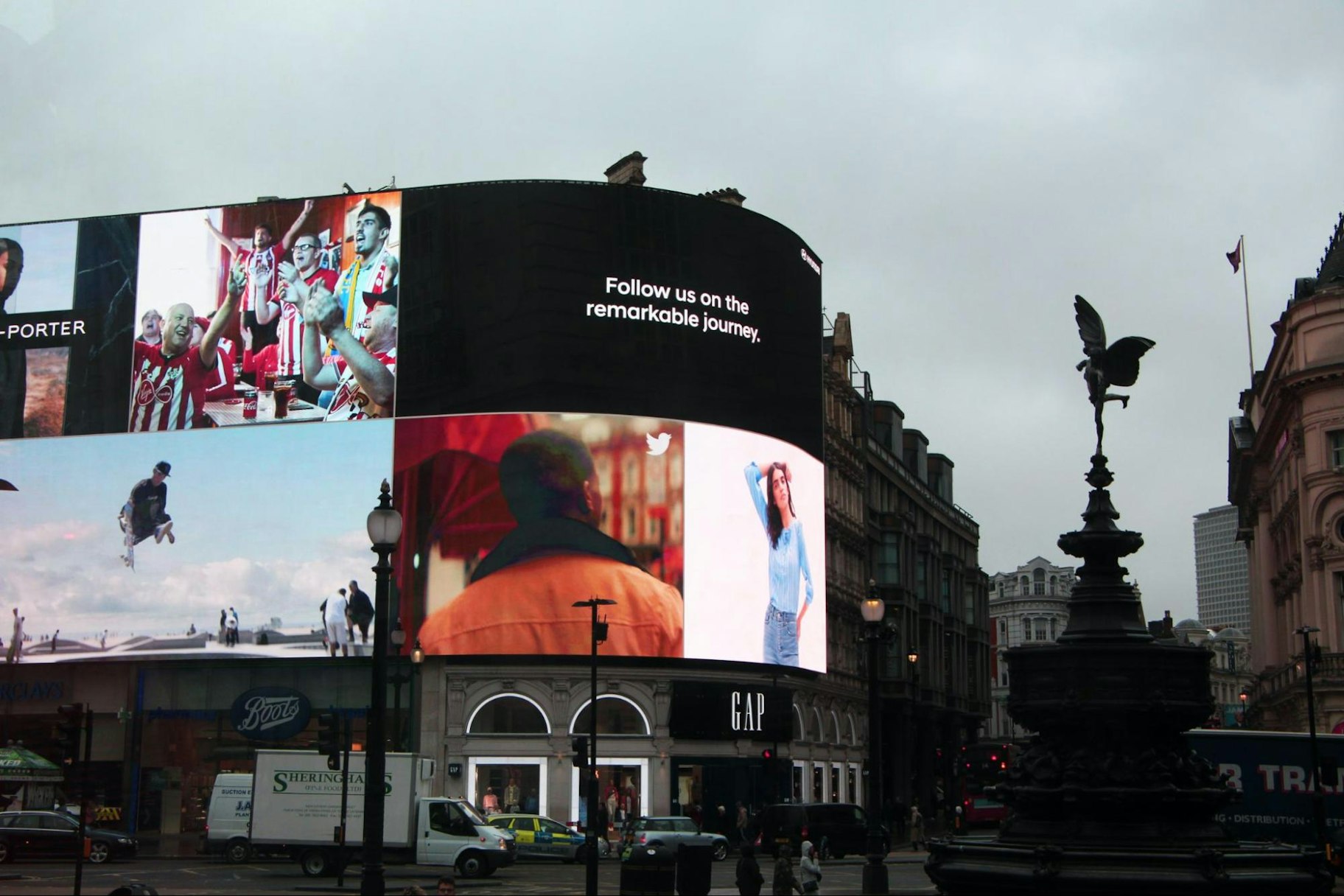
How to create your brand voice in 3 steps
1. Consider your target market
Every brand should have a target market, regardless of what they sell. Perform some in-depth research about the people who purchase from your brand (or create personas if your company’s not live yet).
Perform these basic tasks:
Gather hard data about average ages and demographics. This will help you craft more targeted guidelines for the structure of your brand voice. After all, you’re not likely to talk to millennials the same way you would Gen Z or Gen Alpha.
Check your competitors. How do they talk to their customers?
Ask for direct feedback. About one in three people provide feedback when asked—and 77% of customers are more likely to favor your brand in the process.
Perform extensive A/B testing with written copy. How do customers respond to ads with emojis rather than ads without?
The data gathering process is absolutely foundational to the success of a brand voice. Don’t skimp or rush the process; take a few months to get oriented.
2. Develop your brand archetype
Although there are thousands of different brand voices in the marketplace today, most of them are variations of pre-existing stereotypes. These are commonly referred to as “brand archetypes.”
Brand archetypes are personality concepts that have existed for thousands of years, and are almost immediately recognizable regardless of culture or language. For this reason, brand archetypes can help audiences immediately connect with brands and the messages they’re trying to send.
About 77% of customers connect with brands that share their values, which is why knowing your archetype is so important to success. Choosing a brand archetype (or mix of archetypes) will help to develop more concrete ideas about the voice your brand should use. For example:
Brands that have the Magician archetype (Disney, Dyson, and Disney) lean on fun, imaginative, and reassuring verbiage.
Companies in the Jester archetype (Dollar Shave Club, Old Spice, and M&M’s) focus on playful, quirky, or witty language.
Most luxury brands that fall into the Ruler archetype (Rolex, Lamborghini, and Gucci) emphasize matter-of-fact brand voices that exemplify power.
Take some time getting familiar with your brand and its archetype. Feel free to mix and match to develop a tone that suits your company.
3. Write copy in your brand voice
Although textbook theory has its place, the best way to develop your brand voice is to create some actual writing samples.
Start by writing stream-of-consciousness sentences as though you were your brand talking to a customer. Use “I” statements and talk about your mission, values, and UVP. Be as creative as you want!
Let’s use a fictional ecommerce company called StichLich to create a short paragraph.
“I totally get that losing your favorite pair of jeans is like breaking up a long-term relationship. I bring ‘dead’ clothes back to life with expert alterations and repairs that patch them good as new! And oh yeah—I hate ugly DIY solutions too. Everything I patch is guaranteed beautiful.”
Next, try writing a short paragraph about your brand from an outsider’s standpoint. Let’s use the same brand to compare:
“StichLich is a sewing brand that values humor, levity, and transparency. Like a good friend, the company is straightforward and honest about what it provides. It is authentic and very open about expectations and prices. Despite the humor, it is also warm and reassuring.”
Do these exercises several times (across several days) to give yourself time to think. As you create new paragraphs and refine your approach, you’ll start to get a better idea of how your brand voice should be portrayed.
Brand voice examples
The best brand voices are those that are clear, direct, and easily identifiable. The more distinctive your brand voice is, the more connections you create with leads, customers, and brand ambassadors.
This is extremely true of mnml, a streetwear company that focuses on simplicity and minimalism (if the brand name didn’t clue you in).
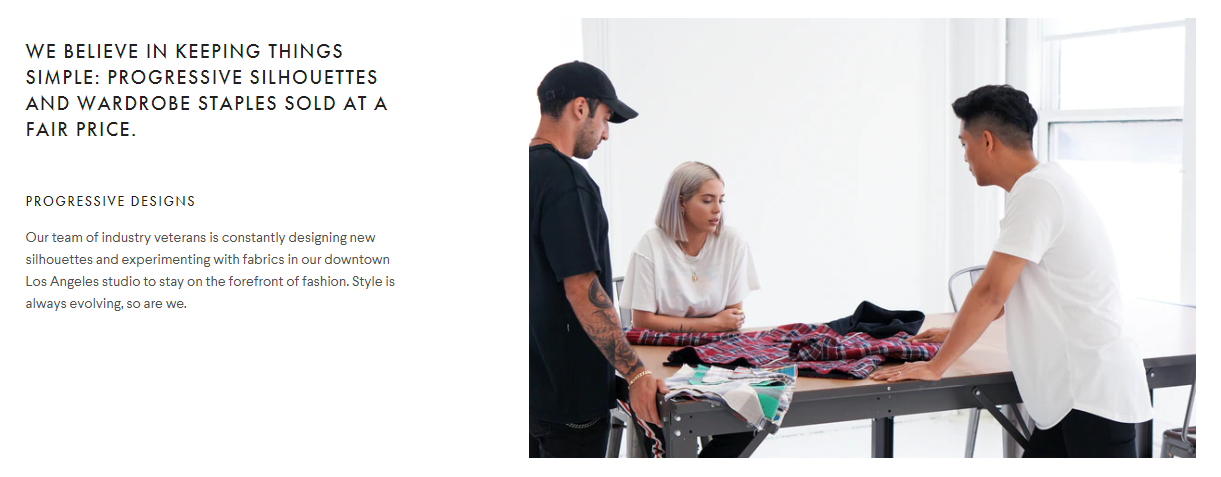
The brand speaks in very short sentences and uses pithy language to communicate its ideas. The formal style provides echoes of a luxury brand reaching the target audience well.
Another brand that leverages its voice well is Huel. Authoritative and relatable, it establishes itself as a relatable friend that understands the meal-prep struggle.
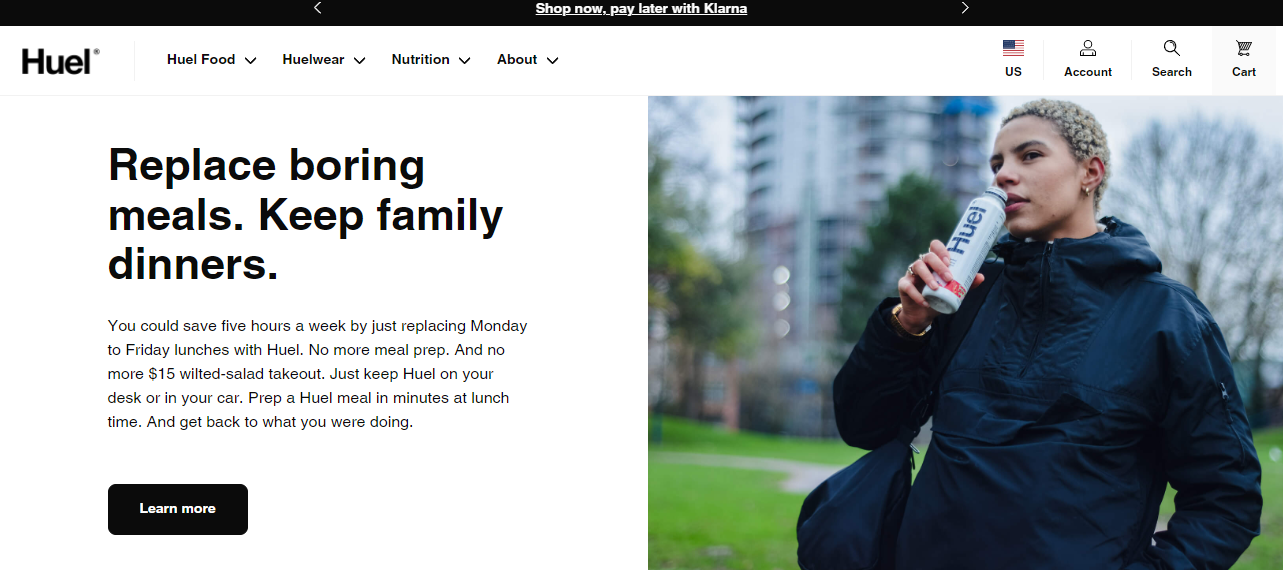
Unlike mnml, Huel isn’t afraid to spice things up with humor. The brand refers to its customers as “Hueligans,” and sprinkles in exclamation points for an added touch.
Apparel brand Chubbies takes a very different approach. Not only is this fun-loving brand extremely upfront with its brand voice, but it takes a more lighthearted approach to addressing its target market.
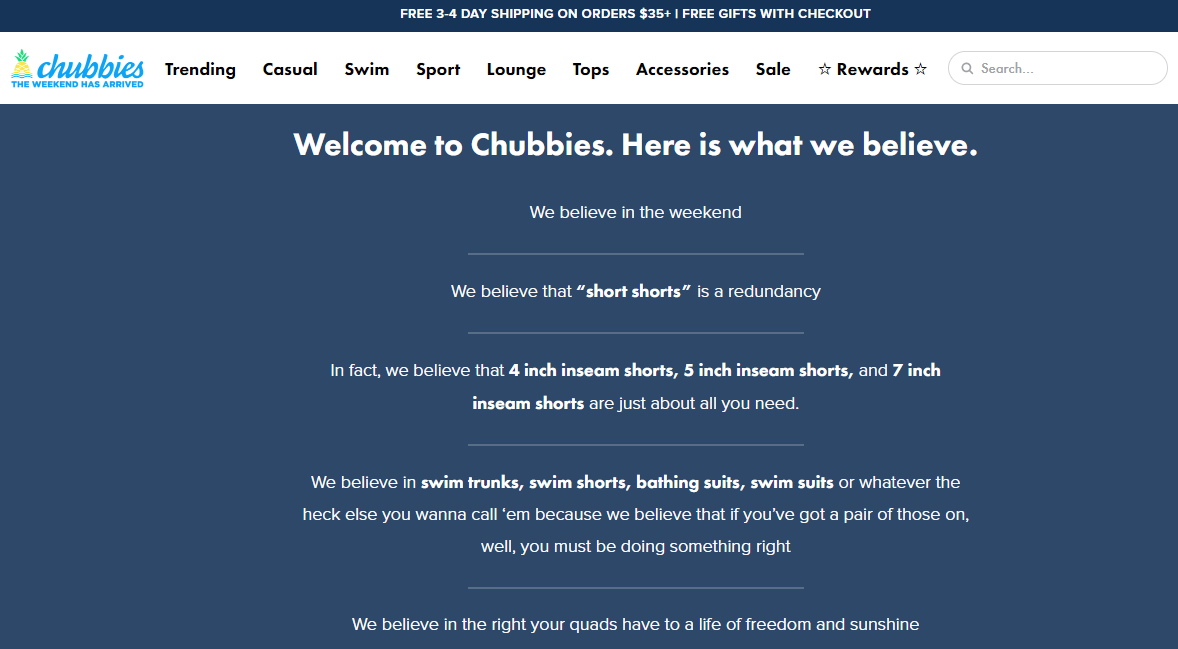
Note the use of colloquialisms here, including “heck” and “em.” There are also quite a few contractions used in the text, which differentiates Chubbies from other competitors.
Keeping your brand voice consistent across all platforms
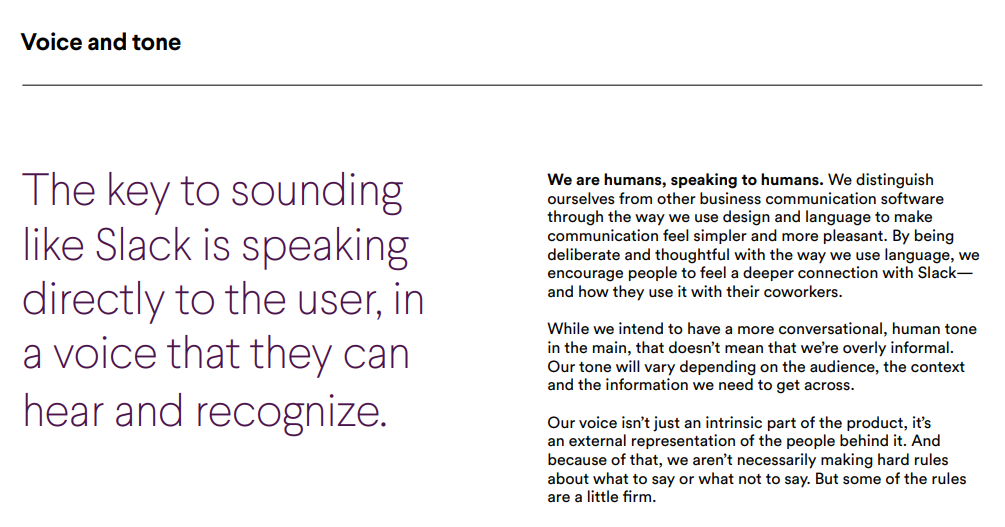
The bigger your brand becomes, the harder it will be to keep the brand voice consistent. As your company grows from a one-man band to a multichannel effort, you’ll want to keep everyone on the same page.
This is where the brand style guide comes into play.
Like a story bible, the role of the brand style guide is to formalize the voice and tone of a brand across all channels. This might include elements like:
Preferred reference terms
Use of commas
Preferred sentence length
Use of exclamation or question marks
Words or phrases to avoid
You can choose to develop a brand style guide in a number of ways. Some brands hire professional creators to create multipage internal documents. Others create style guides that are accessible to the general public.
You can begin building a brand style guide using nothing but Microsoft Word and a little imagination. Use example sentences to create guidelines about how other members of the team should use your brand voice. Tell writers both what to do and what not to do—in simple terms.
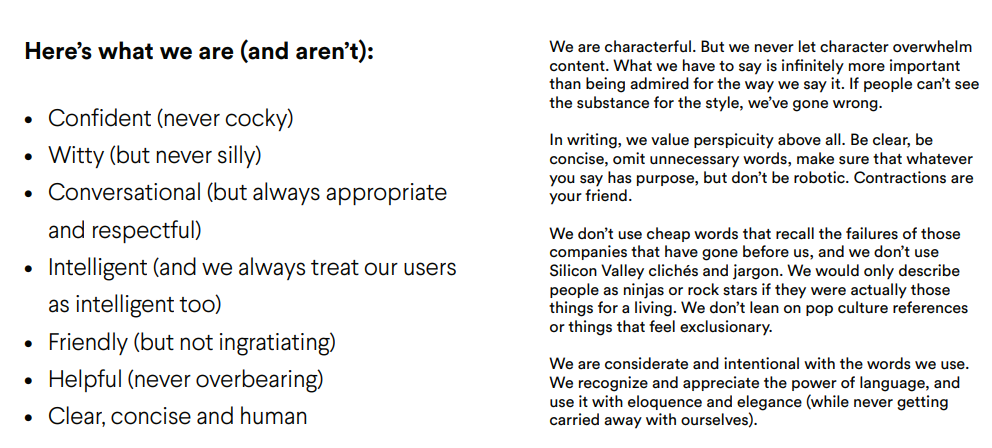
Slack uses a listicle format to communicate expectations about wording and tone. A no-nonsense paragraph helps to bring its voice to light.
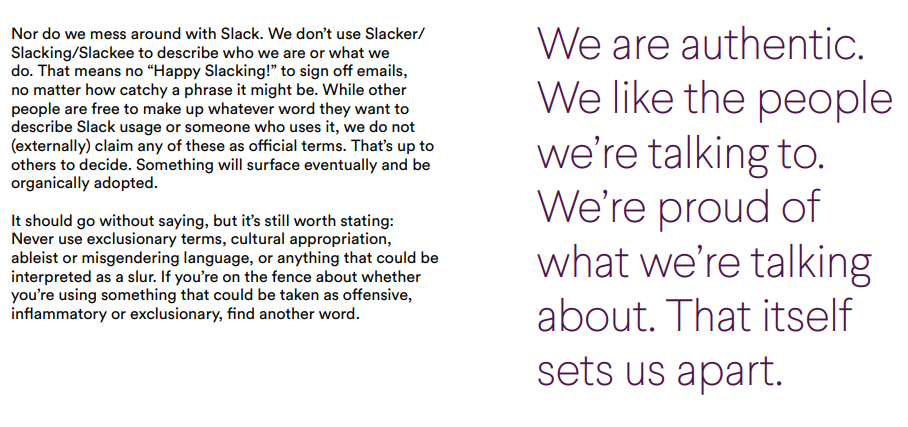
The company also sets firm guidelines around words that are acceptable and unacceptable. Simple sentences help to frame these guidelines in a digestible light. Anyone reading could easily exemplify the brand voice on social media accounts, emails, blog posts, and more—regardless of how long they’ve worked for the company.
Remember: your brand voice style guide is a living document. Don’t be afraid to update or add new things as the company evolves.

Bring your brand voice to life in a single sentence
Now you know what a brand voice is, why it’s important, and how to bring it to life. All that’s left is to move from concept to reality with research, writing, and template building. Reading through some brand voice examples can help to formalize the development process, while creating a style guide makes your brand voice accessible to anyone in the company.
Your brand voice has the power to connect with customers, create a vision, and nurture public perception for years to come. By finding and formalizing a structure that matches your brand’s character, you can develop lasting trust, value, and equity that truly stands out from the crowd.






